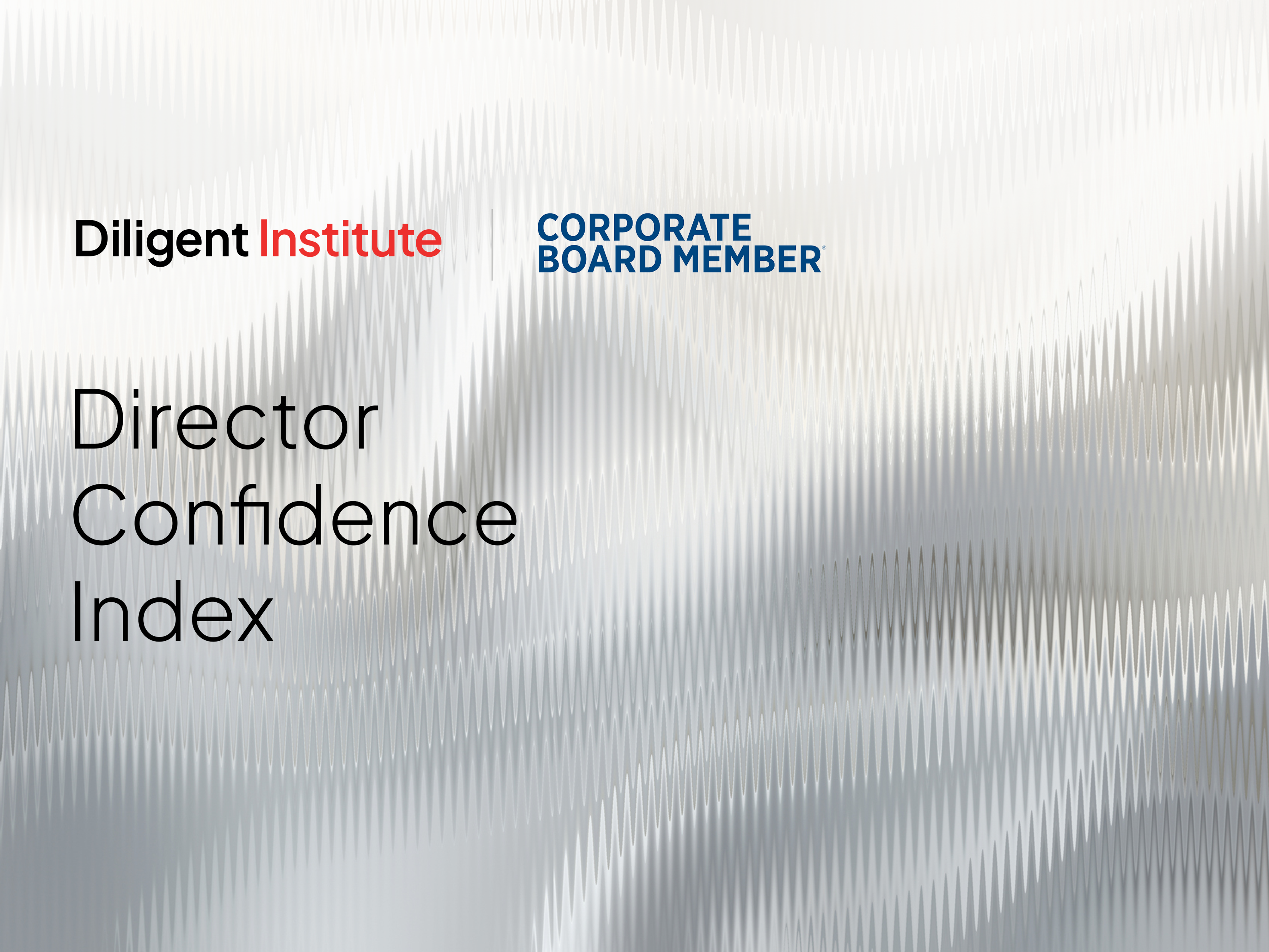Director Confidence Index: Navigating risk & uncertainty

Poll finds boards struggling to navigate Washington
As tariffs, inflation and sourcing disruptions grow, a new poll finds America’s public-company boardrooms fighting to manage the moment. ‘You can't forecast anything.’
Directors’ outlook for the coming months ticked up in Q2, according to the most recent Director Confidence Index, conducted by Diligent Institute and Corporate Board Member, but that doesn’t mean America’s board members are breathing easy. Our latest polling finds the director community remains deeply concerned about the economic impact of the Trump administration’s policies, prompting new approaches to risk oversight in America’s boardrooms.
The extent of the impact from the current administration is extensive. Directors rate the current risk level for U.S. companies at 6.8 out of 10, on a scale where 1 is Negligible and 10 is Significant, with 81 percent of the 126 public company board members polled May 12-14 listing tariffs as the top business risk today.
Second on the list? A tie at 46 percent between two other Washington-created challenges: “supply chain / sourcing disruptions” and “inflation and currency fluctuations” (the survey asked directors to list their top three challenges). The third and fourth picks were D.C.-driven as well: geopolitics and regulatory changes.
“You can't forecast anything in this uncertain environment,” added Joseph R. Bronson, a director on the board of Nasdaq-traded PDF Solutions. “We're doing what we can to deal with this mess created by the White House.”

To cope, directors want to increase the frequency of their board’s strategy and risk conversations (42 percent) and making better use of new AI tools for real-time data and risk analysis (35 percent).
“These two answer options are inherently related,” says Dottie Schindlinger, Executive Director of the Diligent Institute and partner in this research. “As boards recognize the need for more frequent conversations about risk and strategy in the current environment, having access to the real-time data and analysis to support those conversations is crucial.”

Overall, 47 percent say they are engaging in scenario planning to help navigate the current environment—the most common tactic selected by those participating in the survey. Other approaches include diversifying supply chains, revising pricing models and strengthening financial reserves.
“While the highest tariffs keep getting kicked down the road 90-days, that's not a long enough interval for businesses to plan, and there is still no clear trade policy,” said one director.

Still, boards and their companies remain committed to pursuing growth as planned this year. Nearly half (48 percent) said their priority for the rest of the year remains growth—through M&A, new products and new markets. Slightly more than a third said their priority was risk mitigation, including reforecasting, scenario planning and diversification.
“More boards are realizing that uncertainty is the new norm and that many elements driving this uncertainty have been experienced in the past,” said Brian Kushner, who serves on the board of Resideo Technologies, adding: “Just not all at the same time.”


Director Confidence Index: May 2025
Our Q2 polling data with Corporate Board Member finds U.S. public company board members slightly more optimistic in their 12-month forecasts than in Q1, though most continue to expect a recession in the near term.

What keeps GCs up at night?
New study reveals what keeps GCs and their boards of directors up at night—and the potential opportunities in board-GC collaboration.

Director Confidence Index: March 2025
Boardroom outlook plunges 30% in our Q1 survey of U.S. public company directors amid worries about Washington.